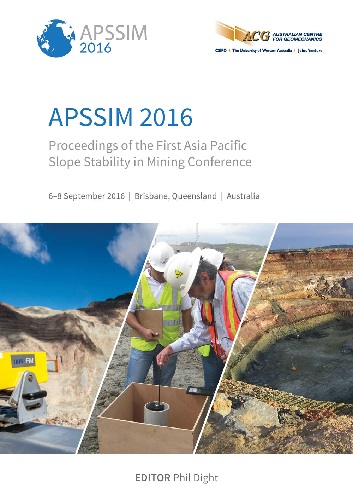Surface water management — a key (but often forgotten) component of pit slope stability management

|
Authors: Hall, JW |
DOI https://doi.org/10.36487/ACG_rep/1604_04_Hall
Cite As:
Hall, JW 2016, 'Surface water management — a key (but often forgotten) component of pit slope stability management', in PM Dight (ed.), APSSIM 2016: Proceedings of the First Asia Pacific Slope Stability in Mining Conference, Australian Centre for Geomechanics, Perth, pp. 135-140, https://doi.org/10.36487/ACG_rep/1604_04_Hall
Abstract:
When looking at the potential influence of pore pressure or groundwater on pit slope stability, and managing these to reduce the risk of slope failures, it is tempting to focus on in situ pore pressure and near pit groundwater flow processes. While surface water runoff is recognised as one of the broad regional sources of long term groundwater recharge, surface water management close to, and within pits, is often focussed on moving large volumes of runoff around, or from, pits with little thought given to how the surface water management system might impact on pit slope stability. It is not uncommon for leakage or spillage from water transfer ponds or water diversion structures to act as local recharge sources close to pit walls and limit the effectiveness of pit dewatering or pit wall depressurisation schemes. Essentially, poor surface water management can undo a lot of good work on dewatering and depressurisation that has usually taken a long time to achieve and at significant cost. This paper presents a practical look at how various commonly adopted surface water management practices can impact on pit slope stability, including numerous examples, and provides a guide on how to avoid the traps of poor surface water management.
Keywords: surface water, depressurisation, dewatering
© Copyright 2025, Australian Centre for Geomechanics (ACG), The University of Western Australia. All rights reserved.
View copyright/legal information
Please direct any queries or error reports to repository-acg@uwa.edu.au
View copyright/legal information
Please direct any queries or error reports to repository-acg@uwa.edu.au